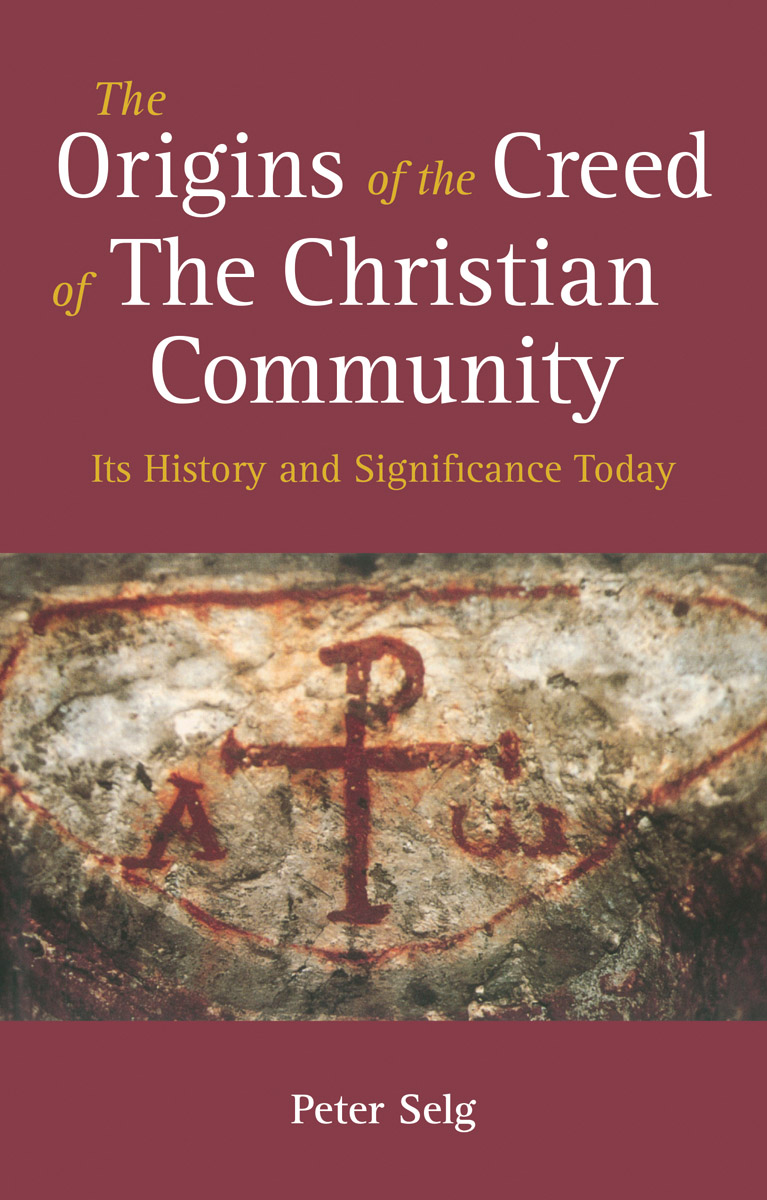The Origins of the Creed of the Christian Community
by Floris Books • 6 February 2020 • The Christian Community • 0 Comments
Unlike other Christian creeds, the creed of The Christian Community is not a statement of belief, but rather a series of assertions that act as a path to a deeper understanding of Christianity.
In “The Origins of the Creed and the Christian Community” Peter Selg offers an insightful and informative overview of how, in the time leading up to the founding of The Christian Community nearly 100 years ago, Rudolf Steiner formulated both the creed itself and its founding principles.
Here, we share an extract from the book highlighting the enduring importance and significance of the creed today.
Our responsibility today
Adolf Müller, who undertook such a profound study of these matters, said the Creed possessed ‘the beauty and clarity of a crystalline configuration of Christian consciousness’. He believed that with it, or with the healing and redeeming truths laid down in it, human dignity could be re-established anew in the twentieth century. According to Müller, the Creed makes a substantial contribution to the human incarnation and connection of Christ with human evolution and thus to what makes possible the ‘re-enlivening of dying earth existence’. The inner movement of the Creed requires heart forces, and indeed, heart thinking of a Michaelic nature. Adolf Müller experienced it as a ‘foundation stone that must be implanted in the human heart’. He concluded his book with this phrase in 1932, a few months before the Nazi regime seized power and embarked on its rule of terror.

As we all know, survival of the ‘intrinsically human’ is today hugely endangered by manifest evil. The redeeming and healing power of Christ and the healing spirit are urgently needed today in all areas of culture and civilisation. The aim of ‘wresting from the death of matter’ people for whom this is possible ‘through their bearing’ is a very topical concern, but in the face of the global and excessively powerful sway of forces wedded to materialism, it seems scarcely achievable. It says in the Creed, in regard to Christ and the souls to be saved by him, ‘those whom, through their bearing, he wrest from the death of matter’. There is freedom here in that Christ’s capacity to act is defined or limited by human ‘bearing’ or conduct. Everything depends on human beings themselves, but human beings are ringed about by powerful forces and powers of temptation, and live within their spell of enchantment. And yet Christ, the ‘Lord of the heavenly forces upon earth’, is very close to human beings in our era, which is also the era of the Archai Michael. With Michael’s help, we can find the way from the kingdom of Ahriman (or even through the kingdom of Ahriman) to Christ.

In his essay on the Creed, Georg Dreissig pointed out that the return of Christ – in Greek, parousia – literally means ‘existence’ and ‘presence’. Rudolf Steiner described the etheric return of Christ as ‘the greatest secret of our age’, and spoke of the raising of the human being into the realm of the etheric, which will enable Christ to become perceptible to us – specifically through the experience of misery and the abyss; of evil, in fact. But the Creed – as spiritual ‘seal of the heart’ (as St Ambrose called it) is of key importance for engaging with this whole process, which requires a great deal of courage and inner assurance. Georg Dreissig wrote:
“In the Creed we grow beyond our earthly humanity toward the Christ, indeed, we grow into him: our feeling insight and grasp of the secret of our humanity, which is rooted in God and his Creation, reveals itself ever more deeply, and at the same time becomes apparent in and through us. As we repeatedly look upon him and upon ourselves in the present era, we place ourselves into his presence.”

Christ entered the earthly world ‘as human being’, as the Creed emphasises in its new version. ‘Christ in the form of a servant’ passed over the land, ‘blessing it’ during his incarnation, and is once again close to us, a brother to human beings, a counsellor and friend.
In this context, Andreas Laudert recalled Rudolf Steiner’s unusual translation of the Caesarea Philippi scene, presented on March 7, 1911, in a lecture in Berlin on the Gospel of St Mark. Steiner said there that Christ did not (only) ask about himself but also about the human I and humanity altogether (‘What do people say of the I?). And Peter replied:
We understand the I in its essential spirituality to be you, the Christ! ‘Communities whose members feel the Christ within themselves’ in this sense form the I-community of the future, of the only possible future on earth, as we can say today after the devastating and renascent experiences of the twentieth century.

